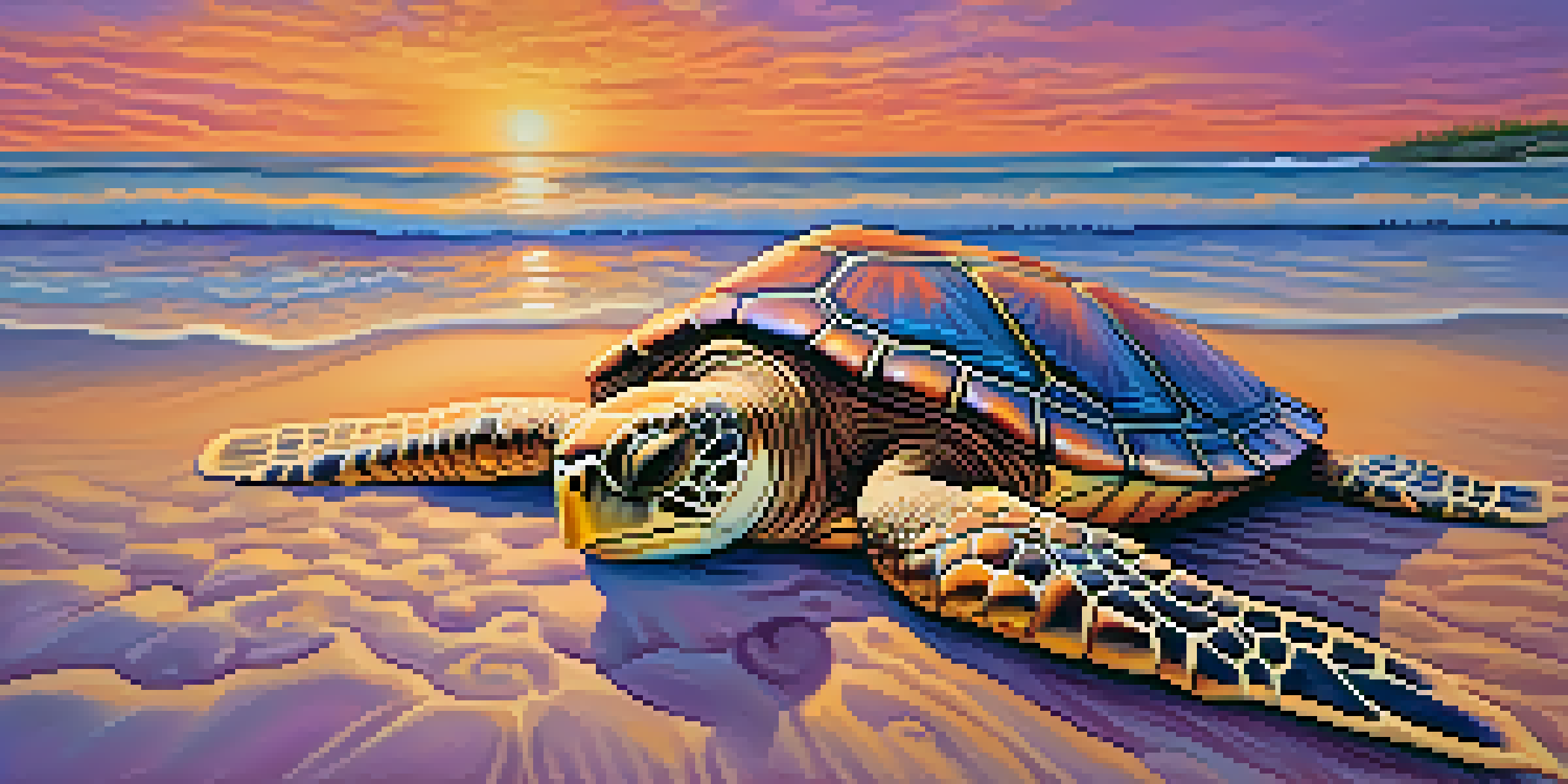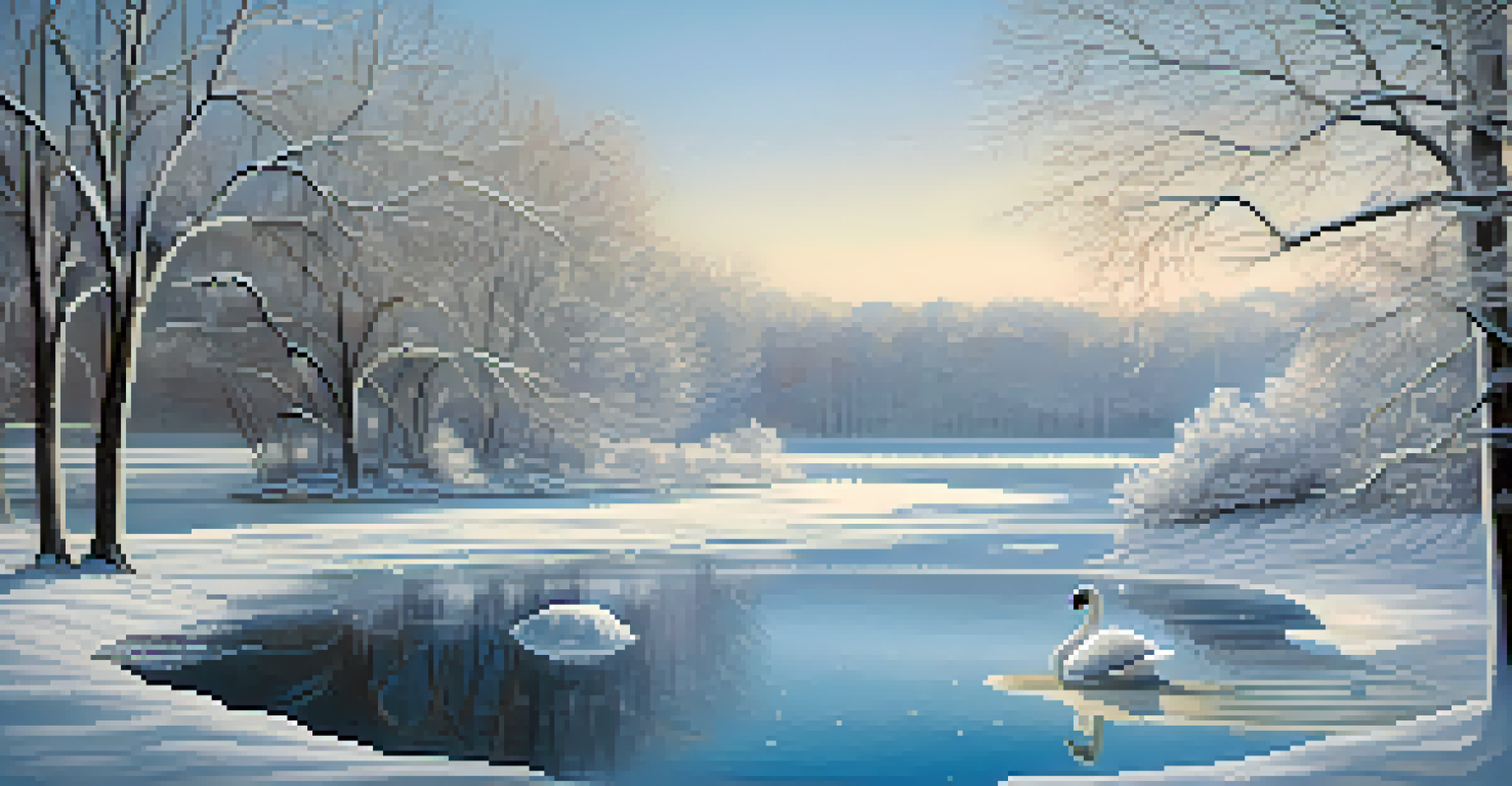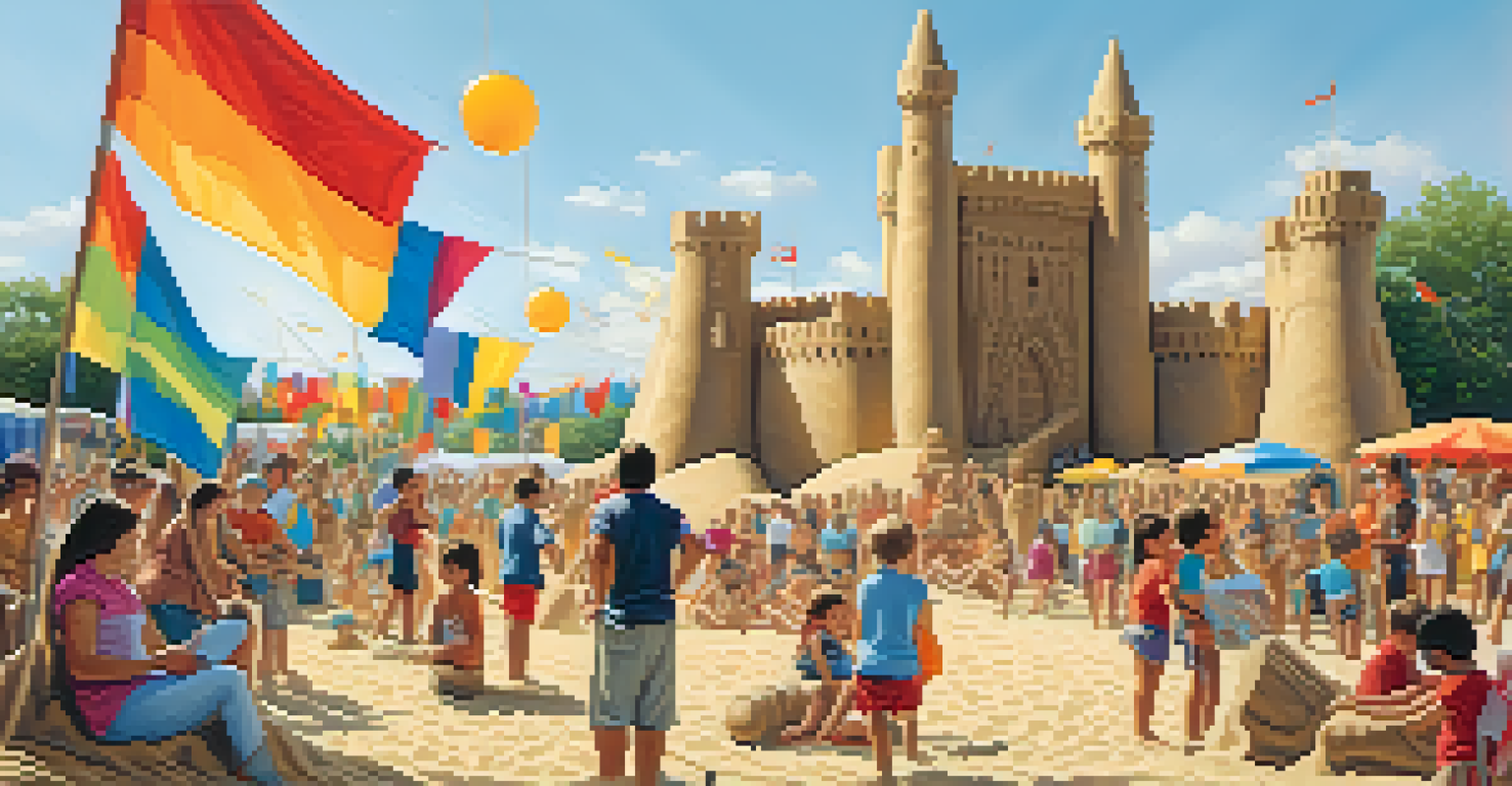Ephemeral Carving: Techniques for Temporary Sculptures

Understanding Ephemeral Carving and Its Significance
Ephemeral carving is a unique form of sculpture that focuses on creating temporary artworks. Unlike traditional sculptures that are meant to last, these pieces are designed to exist for a limited time, often shaped by the elements and human interaction. This art form encourages artists to explore their creativity without the constraints of permanence, allowing for innovative expressions.
Art is never finished, only abandoned.
The significance of ephemeral carving lies in its ability to challenge our perception of art and value. By creating something that will eventually fade away, artists invite viewers to appreciate the beauty of the moment. This fleeting nature of the artwork can evoke emotions tied to time, loss, and the transient beauty of life.
Moreover, ephemeral carving often fosters a deeper connection between the artist and their environment. Whether it's sculpting with ice, sand, or biodegradable materials, the process becomes a dialogue with the surroundings, encouraging both the artist and the audience to engage with the space in meaningful ways.
Common Materials for Ephemeral Carving
When it comes to ephemeral carving, the choice of materials plays a crucial role. Artists often opt for substances that naturally degrade or change over time, such as ice, sand, wood, or even clay. For instance, ice sculptors create stunning pieces that melt away, leaving behind only memories and photographs.

Another popular material is sand, which artists use to create intricate sculptures on beaches or at festivals. These pieces are often washed away by the tide, highlighting the cyclical nature of art and nature. Sand carving not only showcases artistic skill but also emphasizes the environment's powerful influence on the artwork.
Ephemeral Art Celebrates Impermanence
Ephemeral carving encourages artists to create temporary works that highlight the beauty of fleeting moments and the transient nature of life.
Biodegradable materials like leaves, flowers, and even food can be used for ephemeral carving, promoting sustainability and environmental consciousness. Artists who choose these materials often aim to raise awareness about ecological issues while creating something beautiful that will eventually return to nature.
Techniques for Creating Ephemeral Sculptures
Creating ephemeral sculptures requires a blend of creativity and technical skill. One common technique is subtraction, where artists remove material from a larger block to reveal the desired form. This method is often used in ice sculpting, where tools like chisels and chainsaws help shape intricate designs.
The only thing that lasts is change.
Another technique is additive sculpting, where materials are built up to create a structure. For example, artists might stack sand or clay to form shapes that stand for a limited time. This approach encourages experimentation, as artists can easily modify their creations until the desired effect is achieved.
Lastly, artists often incorporate natural elements and textures into their work, enhancing the visual appeal of their sculptures. By using techniques like layering or blending materials, they can create depth and contrast that captivates viewers, making each piece a true spectacle of artistry.
Incorporating Nature into Ephemeral Carving
Nature plays an essential role in ephemeral carving, with many artists drawing inspiration from their surroundings. By incorporating organic materials like branches, stones, or even water, artists create sculptures that harmonize with the environment. This connection to nature not only enriches the artwork but also underscores the importance of our relationship with the earth.
Additionally, the changing seasons can influence the design and execution of ephemeral carvings. For instance, winter might inspire ice sculptures, while spring could lead to floral arrangements. By adapting to these natural cycles, artists embrace the beauty of impermanence and the inevitability of change.
Nature Inspires Unique Sculptures
By using organic materials and embracing natural elements, ephemeral carving fosters a deep connection between art and the environment.
Furthermore, ephemeral sculptures created outdoors often interact with the elements, whether it's wind, rain, or sunlight. This dynamic relationship allows the artwork to evolve and transform over time, providing a unique experience for viewers who witness the sculpture's lifecycle from creation to dissolution.
Cultural Contexts of Ephemeral Carving
Ephemeral carving is deeply rooted in various cultural traditions around the world. Many societies have rituals that involve creating temporary sculptures as part of celebrations or commemorations. For example, in some Asian cultures, sand mandalas are intricately designed and then destroyed to symbolize the impermanence of life.
In Western contexts, festivals like Burning Man showcase ephemeral art that invites communal participation. Artists create large-scale installations that are often set ablaze at the end of the event, reminding participants of the fleeting nature of creativity and community.
These cultural practices highlight how ephemeral carving can serve as a medium for storytelling and reflection. By engaging with these traditions, artists not only preserve cultural heritage but also invite new interpretations that resonate with contemporary audiences.
The Role of Community in Ephemeral Carving
Community plays a vital role in the creation and appreciation of ephemeral sculptures. Many artists collaborate with locals to bring their visions to life, fostering a sense of ownership and pride in the artwork. This collaboration can strengthen community ties and create memorable experiences for everyone involved.
Events like sand sculpture competitions or ice carving festivals often draw crowds, turning the creation of art into a communal celebration. Spectators not only witness the process but may also participate, learning techniques and contributing their ideas. This interactive aspect enhances the connection between the artist, their work, and the audience.
Community Engagement Enhances Art
Collaboration with local communities in creating ephemeral sculptures strengthens bonds and transforms the artistic process into a shared experience.
Moreover, the temporary nature of these sculptures allows communities to celebrate change and creativity. As the artwork fades or transforms, it serves as a reminder of shared experiences and the importance of collective memory in shaping community identity.
Challenges and Considerations in Ephemeral Carving
While ephemeral carving offers unique artistic opportunities, it also presents certain challenges. Weather conditions can greatly impact the integrity of sculptures, particularly those made from ice or sand. Artists must carefully plan their projects, taking into account factors like temperature, humidity, and wind to ensure their creations last for as long as possible.
Additionally, the fleeting nature of ephemeral art can lead to feelings of loss or frustration for artists. After investing time and effort into a sculpture, watching it dissolve or be dismantled can be bittersweet. However, many artists embrace this transience, viewing it as an integral part of the creative process.

Finally, public perception can also pose challenges. Some viewers may struggle to understand the value of temporary art, often placing greater importance on permanence. Artists must engage in dialogue with their audiences, helping them appreciate the beauty and significance of ephemeral creations.